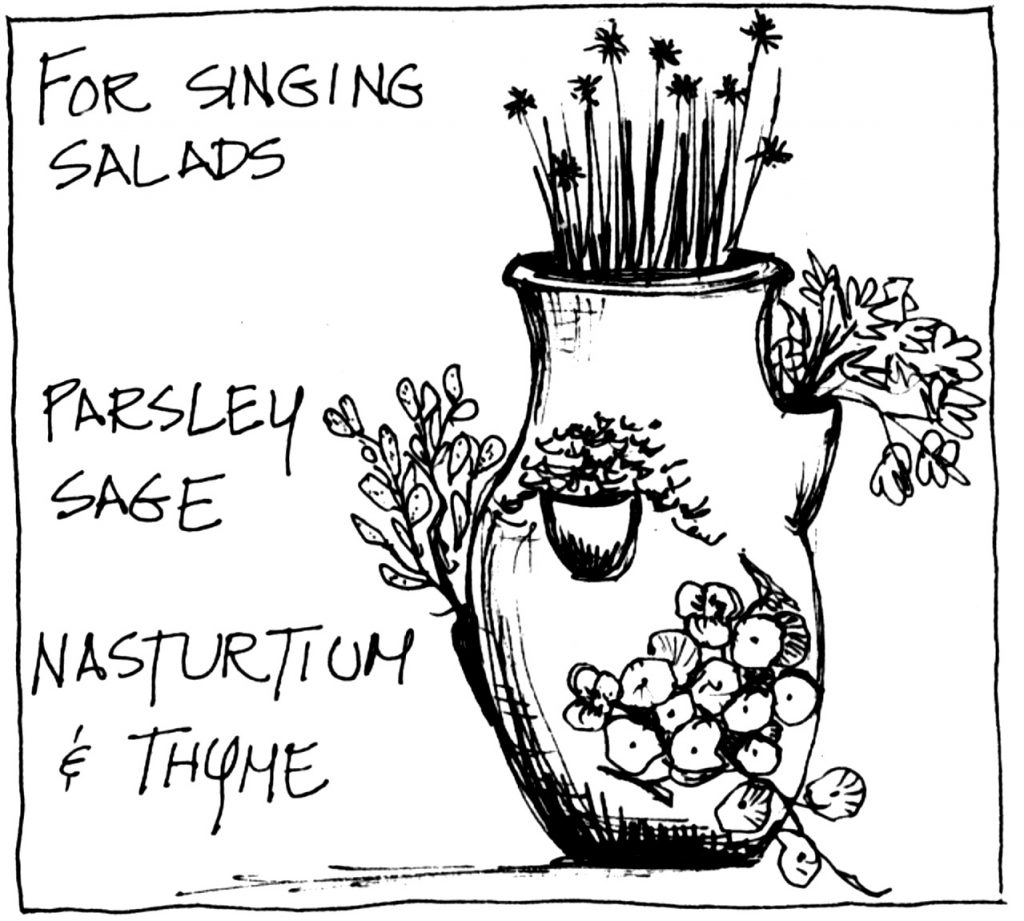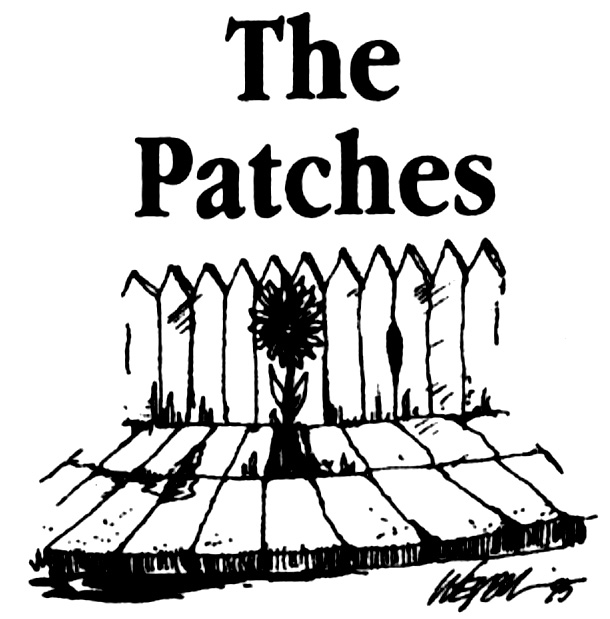What to plant in your container garden

In May 2020, the Annex Gleaner celebrates 25 years of publishing. In acknowledgement of this history we are republishing highlights of our past; this feature, Portable potable vegetables by gardening columnist Bardi Vorster, is from May 1998. As spring is here this advice is timely.

By Bardi Vorster
There is a unique pleasure to growing your own food. The double reward of watching plants grow and then savouring the harvest is especially satisfying. A pinch of fresh sage or a snip of chives will enliven any boring dish and growing your own veggies is the best way to discover the real meaning of freshness.
An acre is not necessary; planting herbs and vegetables in containers is a great way to try a variety of comestibles on even the smallest balcony. Containers make it possible to cater to the exact soil requirements of each plant and separate them if invaded by pests. Contrasting foliage such as sage and parsley and purple basil is delightfully decorative. Try a lemon tree or a rosemary bush and it can double as a house plant in the winter.
The planter environment
Plant life in a pot is somewhat different from life in the ground. Porous clay pots will dry out more quickly than plastic or metal containers. Adding peat moss to the planting mix will help retain water as will mulching if there is soil showing before the plants fill out. Because pots need more watering, they also need regular fertilizing. It’s a good idea to check nutrition requirements for each type of plant you grow as preferences vary.
The smaller volume of soil means greater temperature fluctuation. Roots need a cooler than air temperature in the heat of our summers. Consequently, thin metal containers may need insulation to allow optimum growth. This can be done most easily by using a plastic pot as a liner, or bubble wrap (around the sides only).
Good drainage is critical, and to this end all pots should have a drain hole. Cover holes with landscape fabric or a piece of J-cloth before filling the pot with soil, which will prevent soil but not water from washing out. Containers without holes can be used as pot covers but be sure that plants do not stand in water.
Another consideration is portability. If you are growing something that must be moved inside for the winter, or during the season, permanent casters or a dolly will make life easier.
Probably the most useful size pot for growing vegetables is the five gallon one. Peppers need 12-inch depth and 15-inch diameter for each plant. Herbs will be fine in smaller pots but 6-inch would be a minimum. A grapefruit tree would need a 10-gallon pot – with wheels and long term commitment!
Most suitable plants
There are some vegetables which are not suitable for growing in containers; corn, potatoes, winter squashes, or grains take up too much room. Broccoli does not develop properly indoors. Brussels sprouts are slow and difficult.
Varieties should be chosen for their date to maturity, unless you want to start them indoors or extend the gardening season by taking them inside in the fall. Summer squashes such as early prolific, fordhook, or early white bush will mature in approximately 60 days. Bush beans delinel, tendergreen, and eureka wax are fast growers. The seed germinates in four to seven days and the beans are ready in approximately eight weeks. Date to maturity is usually found on the seed package.
Dwarf varieties are the most useful. Sometimes several can be grown in one large container. For example, dwarf modern lettuce produces heads about the size of tennis balls.
I’ve always liked eggplant because the plant is attractive. I recently discovered that it is actually a perennial which can live for four to six years. It is very sensitive to frost so it would be a good candidate for keeping over the winter. Remarkably, the dwarf plants produce full size fruit.
Apart from the above mentioned unsuitables, many other vegetables have been successfully grown in containers; as long as you group plants with similar requirements, I don’t see why you shouldn’t try anything.
Herbs are even easier. Most do not have special soil requirements. Many prefer drier, sandy soils and are happy being pot-bound. There are always exceptions such as parsley which prefers a rich, humus mix.A very important component is the quantity and quality of light for growing herbs and vegetables. Full sun is always best, however, part-shade is tolerated by some. If your area is less than perfect, stick to salad greens and herbs for foliage. The plants which don’t have to spend their energy on producing flowers and fruit have the lowest light needs.
